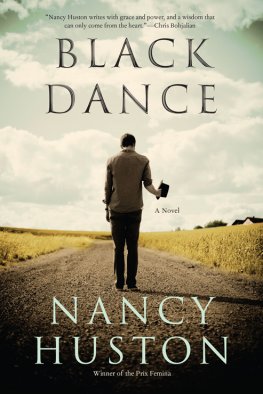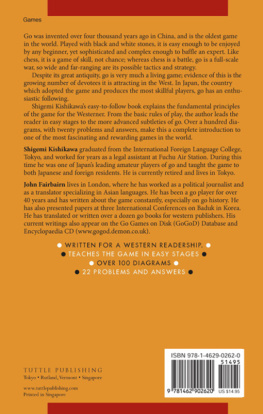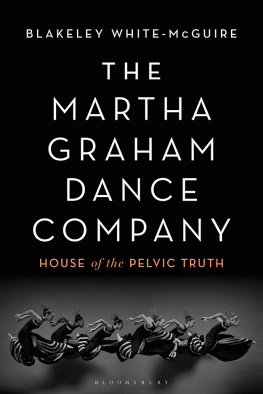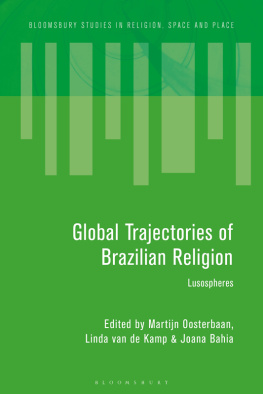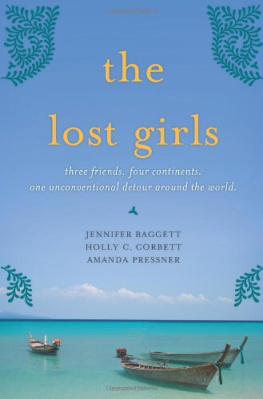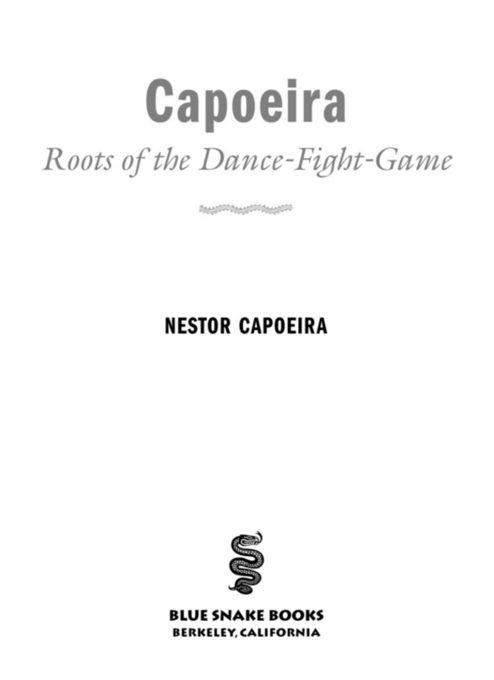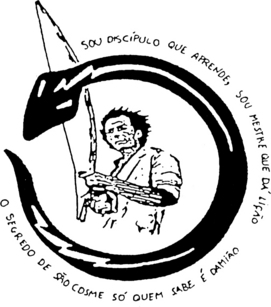Copyright 2002 by Nestor Capoeira. All rights reserved. No portion of this book, except for brief review, may be reproduced, stored in a retrieval system, or transmitted in any form or by any meanselectronic, mechanical, photocopying, recording, or otherwisewithout written permission of the publisher. For information contact Blue Snake Books c/o North Atlantic Books.
Published by Blue Snake Books
Blue Snake Books publications
are distributed by
North Atlantic Books Cover and book design by Jennifer Dunn
P.O. Box 12327 Edited by Kara McBride
Berkeley, California 94712 Printed in the United States of America
Capoeira: Roots of the Dance-Fight-Game is sponsored by the Society for the Study of Native Arts and Sciences, a nonprofit educational corporation whose goals are to develop an educational and cross-cultural perspective linking various scientific, social, and artistic fields; to nurture a holistic view of arts, sciences, humanities, and healing; and to publish and distribute literature on the relationship of mind, body, and nature.
North Atlantic Books publications are available through most bookstores. For further information, visit our websites at www.northatlanticbooks.com and www.bluesnakebooks.com or call 800-733-3000.
PLEASE NOTE: The creators and publishers of this book disclaim any liabilities for loss in connection with following any of the practices, exercises, and advice contained herein. To reduce the chance of injury or any other harm, the reader should consult a professional before undertaking this or any other martial arts, movement, meditative arts, health, or exercise program. The instructions and advice printed in this book are not in any way intended as a substitute for medical, mental, or emotional counseling with a licensed physician or healthcare provider.
eISBN: 978-1-58394-637-4
Library of Congress Cataloging-in-Publication Data
Capoeira, Nestor.
[Capoeira. English]
Capoeira : roots of the dance-fight-game / by Nestor Capoeira.
p. cm.
ISBN 1-55643-404-9 (alk. paper)
1. Capoeira (Dance) I. Title.
GV1796.C145 C3313 2001
793.31981dc21
2001030938
v3.1
This book is for Rubinho Tabajaras, Paulinho Chocolate, Nego Muzenza, Khorvo, Abelha da Gvea, Ezequiel, Paulo dos Anjos, and Mosquito da Senzalaall of whom, in the strength and beauty of youth, departed us to play in other rodas, at other levels. It was too soon, my friends, and you left us longing for your company.
Foreword
This book is part of a trilogy, but it can be read just as well separately from the other two books. The trilogy, originally published in Brazil, is
Capoeira, pequeno manual do jogador (So Paulo: Ground, 1981) (Fourth edition revised and extended. Rio de Janeiro: Record, 1998.
Capoeira, galo j cantou (Rio de Janeiro: Arte Hoje, 1985) (Second edition revised and extended. Rio de Janeiro: Record, 1999.
Capoeira, os fundamentos da malcia (Rio de Janeiro: Record, 1992). (Eighth edition revised and extended Rio de Janeiro: Record, 2002).
The first book, Capoeira, pequeno manual do jogador, has been translated into English, French, Danish, and German:
The Little Capoeira Book (Berkeley, CA: North Atlantic Books, 1995). Translated by Alex Ladd.
Capoeira, le petit manuel du joueur (Paris: ATABAC, 1997). Translated by Gilles Cheze.
Capoeira, kampdans og livsfilosofi fra Brasilien (Denmark: Odense Universitesforlag, 1997). With Johan Borghall. Translated by Marianne Kristensen.
Capoeira, Kampfkunst und Tanz aus Brasilien (Berlin: Weinmann, 1999). Translated by Gerhard Schmitt.
I also wrote a fictional adventure story with three capoeira players as heroes:
A balada de Noivo-da-vida e Veneno-da-madrugada (Rio de Janeiro: Record, 1997).
Contents
Preface
My love affair with books started in the beginning of the 1970s, when I lived three years in Europe and wrote a pamphlet for my students.
Upon returning to Brazil I realized that nothing new had appeared since Waldeloir Regos excellent book, Capoeira Angola (1968). But Rego was an academic scholar, and the last manuals that had been published with objective capoeira exercises were already twenty years old and did not provide much information about training, nor about the philosophy and music of capoeirathe very heart and soul of the game.
After four years of my knocking on editors doors, finally Ground (So Paulo, 1981) published O pequeno manual do jogador de capoeira, translated to English as The Little Capoeira Book. Later, Arte Hoje published Galo j cantou together with an LP record with songs and rhythms on the atabaque drum as well as on the berimbau, the long-bowed instrument that sets the pace for the game.
Only this book was missing to complete the trilogy.

I had simple plans for this last book.
I would interview historians, sociologists, anthropologists, and people who have studied capoeira and Afro-Brazilian culture, such as Jair Moura, Julio Cesar de Souza Tavares, Muniz Sodr, as well as young and old capoeira mestres (teachers).
I planned to compare periods of capoeira history with events of Brazilian history and also to present a practical teaching method for advanced students.
All of this was to be illustrated by Carybs wonderful capoeira drawings. In a very friendly gesture, he put twenty-four of them at my disposal when he heard about my passion and addiction to the game and my plans to go deep into the philosophy of capoeira. Because of their ax (energy), knowledge of the movements subtext, and spontaneity, these drawings have fascinated me and filled me with admiration ever since the 1960s when I was a capoeira apprentice.
To my great surprise, it became clear to me, when I compared different sources of information, that the history accepted by most capoeira players and also presented in my first book (of 1981) was not correct! So this book took on a new meaning. I had the chance to refute my opinions of ten years earlier, feeling the pleasure of being similar to that maluco beleza (beautiful madman, a well-known song by the late Raul Seixas)a moving metamorphosis instead of having that same old solid opinion about everything.

Another matter of importance in this book relates to the fact that capoeira has been taught in the United States and Europe since 1971, and recently some North American students of radical ideology have wanted to prove that capoeira was exclusively African, diminishing and even invalidating Brazils role in its history.


